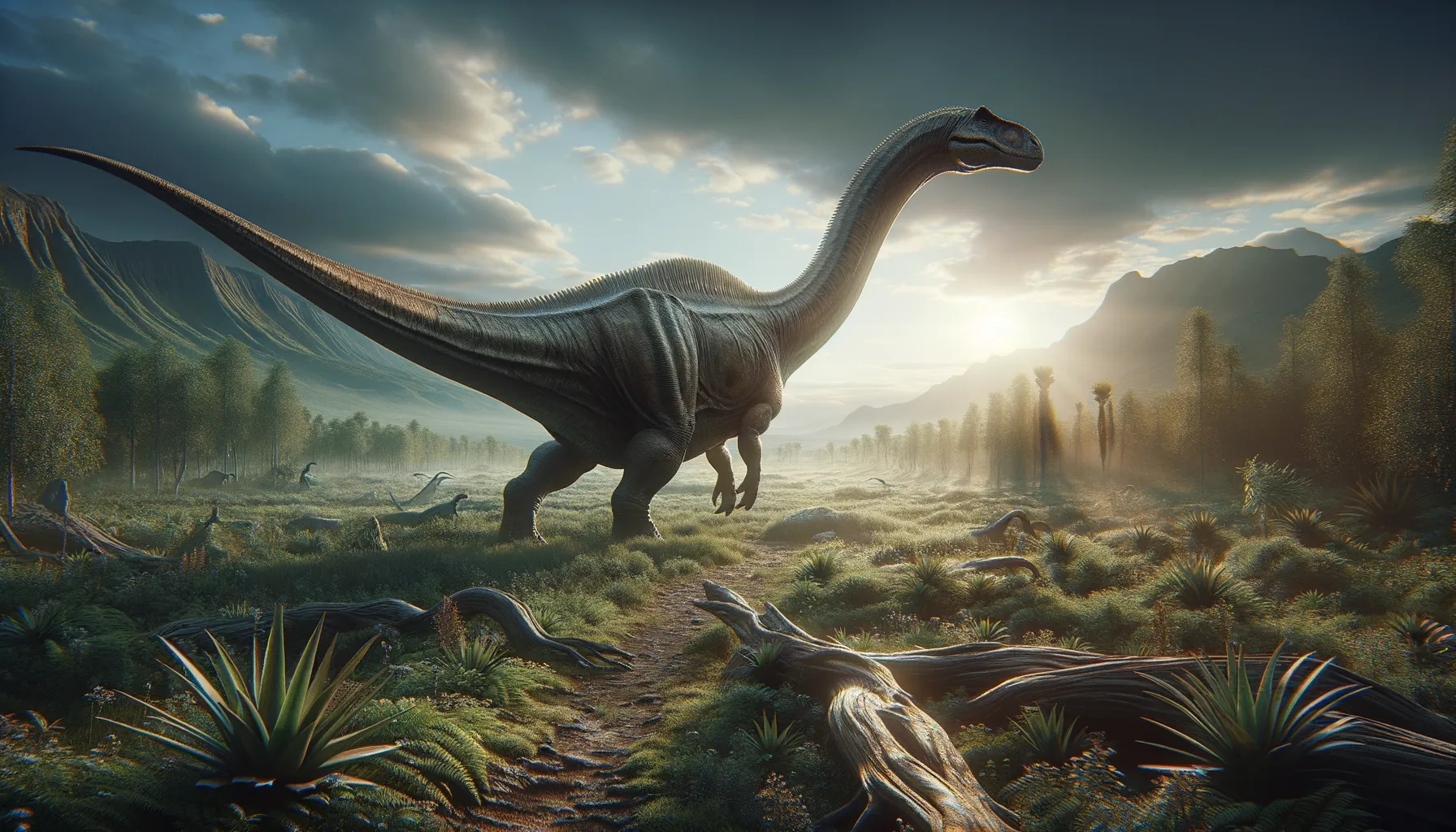
Malarguesaurus
Giant of the Argentinian Cretaceous!
Period
Cretaceous
Length
About 25 meters long.
Height
Approximately 10 meters tall.
Weight
Estimated to weigh up to 40 tonnes.
Malarguesaurus was a massive sauropod dinosaur from the Late Cretaceous period, known for its long neck and tail. It roamed the South American landscapes, munching on vast amounts of vegetation to sustain its enormous size. Fossils found in Argentina have revealed insights into its structure, helping scientists understand more about the diversity of sauropods in this region.
Diet
Malarguesaurus was a herbivore, feeding on a variety of plant materials. Its long neck allowed it to reach high vegetation, such as leaves and branches from tall trees. Its diet likely included a mix of conifers, ferns, and cycads, helping it gain the nutrition it needed to grow so large.
Hunting
Being a herbivore, Malarguesaurus did not hunt other animals. Instead, it likely spent much of its time foraging for food. It would have been more focused on finding ample supplies of plant material to sustain its size.
Environmental challenges
Malarguesaurus faced the challenge of finding enough food to sustain its massive body in a landscape that could shift between lush and arid climates. It likely had to adapt to the changing seasons, possibly migrating to areas with more abundant food sources. Predators too might have been a threat, although its size offered protection. Competition for resources with other herbivores could have been another environmental pressure.
Speed
Likely slow due to its massive size.
Lifespan
Estimated to be around 70 to 80 years.
First discovery
Discovered in 2005 in Argentina.
Fun Facts
- Malarguesaurus was a plant-eating dinosaur that lived around 86 to 84 million years ago during the Late Cretaceous period.
- Its fossils were first discovered in the Malargüe region of Argentina, which is how it got its name.
- Malarguesaurus belonged to a group of dinosaurs known as sauropods, which are famous for their long necks and tails.
- This dinosaur was likely quite large, with some estimates suggesting it could have been over 60 feet long.
- Malarguesaurus is closely related to other South American sauropods, sharing similar features that helped scientists understand its family tree.
- The discovery of Malarguesaurus has provided valuable insights into the diversity of sauropods in South America during the Late Cretaceous period.
- Even though Malarguesaurus was huge, it probably used its size and height to feast on the leaves of tall trees effectively.
Growth and Development
Malarguesaurus experienced rapid growth to reach its enormous size, with young dinosaurs likely needing plentiful food for development. It might have taken decades to reach full maturity, growing continuously throughout its life. The process of growing such a large frame would have required efficient metabolism and digestion to extract the maximum nutrients.
Habitat
Malarguesaurus inhabited lush forests and possibly semi-arid plains, where vegetation was abundant. Its environment would have provided the plant materials necessary for its herbivorous diet. The presence of rivers or water bodies might have played a role in its ecosystem, providing hydration and enabling plant growth.
Interaction with other species
Malarguesaurus may have coexisted with other dinosaur species, both herbivores and carnivores. Its sizeable presence might have deterred potential predators. It likely shared its habitat with similar sauropods, competing for the same food resources. Interaction could also have included socializing within its species or moving in herds for protection.
Natural lifespan
Its natural lifespan might have extended over several decades.
Reproduction
Malarguesaurus likely reproduced by laying eggs, as is common among sauropods. It might have nested in group sites, providing some protection for the vulnerable eggs. The young would have hatched small but grew quickly, potentially congregating in herds for protection from predators.
Social behaviour
This dinosaur may have exhibited social behaviors, potentially moving in herds. Herds could have offered protection from predators and improved chances of finding food. Communication among individuals might have been necessary to coordinate movements and maintain group cohesion.
Fossil locations
Fossils of Malarguesaurus have been primarily located in Argentina, South America. These sites have provided valuable information on this species' anatomy and its environment. The area is known for yielding a variety of Cretaceous dinosaur fossils, offering a deeper understanding of the regional biodiversity during that period.
